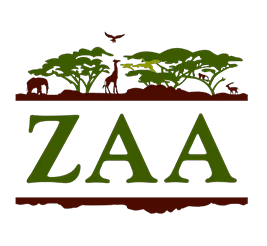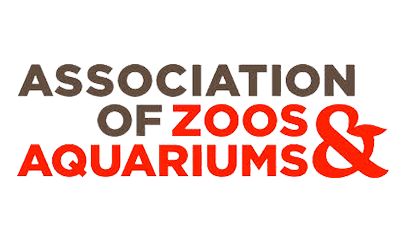Testimonials
“When we were considering what species to put in the Blesbok Exhibit, we learned from International Animal Exchange that Giant Eland may be available. We were a little concerned about breeding, and the large investment, but them we determined that an all-male exhibit was feasible, so we went for it. The exhibit turned out to be an Ultimate Ungulate exhibit, and our visitors and staff are awed by the magnificence of these animals. We are proud to be one of the zoos participating in the cooperative conservation and exhibit program for Giant Eland with International Animal Exchange.”
“There are many species (Sumantran rhino, giant panda, mountain tapir) that I never thought I would see alive, let alone have the opportunity to work with in my long zoo career. The Giant Eland falls into that category as one of those elusive creatures that are truly magnificent and an exceptional display animal. Our partnership with International Animal Exchange on this made it possible.”
“Our visitors and staff continues to be fulfilled and amazed with this Giant of African Antelopes! Giant Eland are a magnificent variant race of antelope, which has become highly endangered in recent years. Giant Eland are an ideal species as an educational model. Their true grace and beauty are unmatched in the antelope world. Any zoo that has the desire, space and support should participate in the Giant Eland Program! Thanks to International Animal Exchange for bringing these magnificent animals into the Captive Breeding Program.”
“My experience with Giant Eland underscores the importance of establishing a viable captive population of a species before it becomes endangered in the wild. While the Giant Eland population was doing well when the first group was imported into the United States by International Animal Exchange, this species’ numbers in the wild have plummeted during the subsequent years of political upheaval and habitat loss. The financial investment made by all holders of Giant Eland has provided for a spirit of cooperation that ensures a healthy managed population.”
“One of the delights of my life was the opportunity to have the Giant Antelope of Africa at the Cincinnati Zoo. I am so pleased at our successful breeding program. I recommend this species for all zoological exhibits and keeping with the future conservation programs.”
“Out of Africa and Deep into the Heart of Texas. I never dreamed I would be bringing one of the premier antelope species to Houston, my new home. When I learned that Giant Eland might be available, we found an exhibit and were ready to go. We had no budget to acquire the animals, but with the generous support of a donor who had a personal experience with Giant Eland in Africa, we now have this magnificent species in our collection. The all-male exhibit has impressed and entertained our 1.5 million zoo guests. The Giant Eland is truly a spectacular species! Our partnership with International Animal Exchange made this possible.”
Lorem ipsum dolor sit amet, consectetur adipiscing elit. Nunc at mattis eros. Pellentesque tincidunt blandit lorem aliquet ultrices. Etiam id maximus lectus. Nam molestie viverra ex eu semper. Nunc ornare nisl non quam viverra, vel commodo arcu pharetra. Orci varius natoque penatibus et magnis dis parturient montes, nascetur ridiculus mus. Integer laoreet pellentesque mauris ac pharetra. Nulla facilisi. Donec at rutrum massa. Cras semper libero lorem, ut euismod orci molestie sed.
Lorem ipsum dolor sit amet, consectetur adipiscing elit. Nunc at mattis eros. Pellentesque tincidunt blandit lorem aliquet ultrices. Etiam id maximus lectus. Nam molestie viverra ex eu semper. Nunc ornare nisl non quam viverra, vel commodo arcu pharetra. Orci varius natoque penatibus et magnis dis parturient montes, nascetur ridiculus mus. Integer laoreet pellentesque mauris ac pharetra. Nulla facilisi. Donec at rutrum massa. Cras semper libero lorem, ut euismod orci molestie sed.
Lorem ipsum dolor sit amet, consectetur adipiscing elit. Nunc at mattis eros. Pellentesque tincidunt blandit lorem aliquet ultrices. Etiam id maximus lectus. Nam molestie viverra ex eu semper. Nunc ornare nisl non quam viverra, vel commodo arcu pharetra. Orci varius natoque penatibus et magnis dis parturient montes, nascetur ridiculus mus. Integer laoreet pellentesque mauris ac pharetra. Nulla facilisi. Donec at rutrum massa. Cras semper libero lorem, ut euismod orci molestie sed.
Lorem ipsum dolor sit amet, consectetur adipiscing elit. Nunc at mattis eros. Pellentesque tincidunt blandit lorem aliquet ultrices. Etiam id maximus lectus. Nam molestie viverra ex eu semper. Nunc ornare nisl non quam viverra, vel commodo arcu pharetra. Orci varius natoque penatibus et magnis dis parturient montes, nascetur ridiculus mus. Integer laoreet pellentesque mauris ac pharetra. Nulla facilisi. Donec at rutrum massa. Cras semper libero lorem, ut euismod orci molestie sed.





